Venous Disease
Venous Disease refers to all conditions related to or caused by veins that become diseased or abnormal. Venous disease is quite common -- about 15 percent of the adult population is affected. Mild venous disease is usually not a problem for patients, but as venous disease worsens, it can become crippling chronic venous insufficiency.
Venous diseases include:
- Spider veins
- Varicose veins
- Leg Swelling & Leg Pain
- Chronic venous insufficiency
- Leg skin changes
- Leg Ulcers
- Phlebitis
- Vascular Malformations
- Venous Malformations
Risk factors for venous disease include:
- Family history
- Age – usually appears between 30 to 70 years & progressively gets worse
- Obesity adds pressure on the veins
- Sex – women are more prone probably due to pregnancy, HRT or birth control pills, which relaxes the vein wall Prolonged standing increases the pressure on the venous system
- Prior history of blood clot formation in the veins
- Trauma
- Illness
- Surgery
- Medications
- Lifestyle
Spider veins (Telangectasias)
Spider veins are clusters of small, unsightly veins that may appear red, purple, or blue. Spider veins are the smallest type of varicose vein & are usually only a cosmetic concern since they are generally medically insignificant. But in some people, they may be painful. They most commonly appear on the thigh, calf & ankle. They lie very close to the surface of the skin. Although they are connected to the larger venous system, they are not essential to it. It is estimated that about 50 percent of adult females are affected with spider veins. The treatment of spider veins (sclerotherapy) is treated with special injections which will instantly close the vein.
Varicose Veins Definition:
- The word “varicose” comes from the Latin word “varix,” which means twisted.
- Varicose veins can be defined as an enlarged, gnarled blood vessel carrying impure blood from the extremities of the body to the heart lying close to the skin.
- It affects any vein but commonly those of the leg & feet.
- Extremely common - approximately 30% of the population suffer from it.
Patho Physiology:
How normal valves work when the leg muscles are pumping during walking
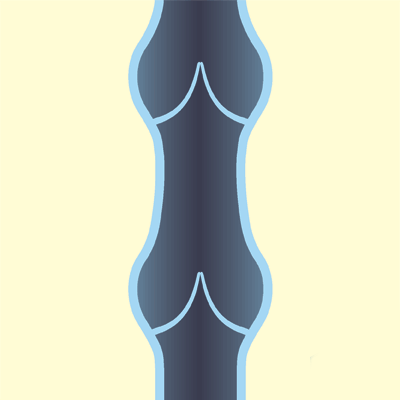
Vein valves failing to close causing venous reflux – a cause of varicose veins
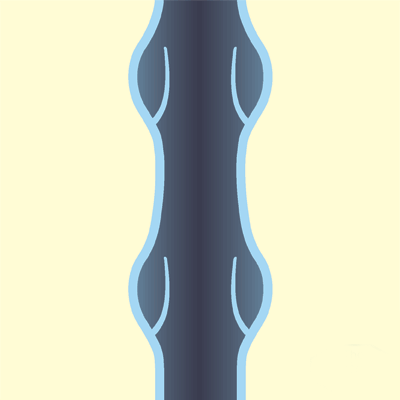
Failing vein valves causing venous reflux – a cause of varicose veins
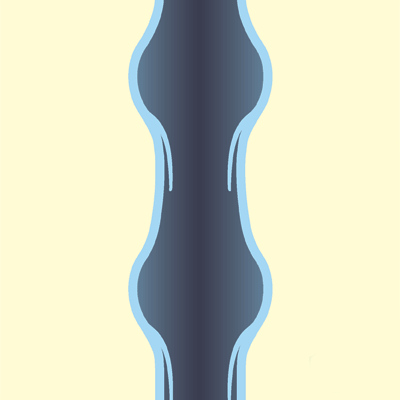
- Blood returns to the heart through a system of small and large veins. The muscles of the calf pump the blood back to the heart through these veins.
- Specialized valves allow the blood to flow upwards in one direction against gravity.
- The valves open as the blood is pumped towards the heart and close to stop it flowing downwards towards the feet.
- Varicosities occur when the valves in the vein malfunction.
- The vein wall becomes less elastic and dilates like a balloon.
- The blood flows backwards and the pressure in the legs increase causing eczema and ulceration.
- Pregnancy also causes varicosities as the uterus presses on the veins and cause increase pressure.
Symptoms:
Short saphenous vein

Long saphenous vein
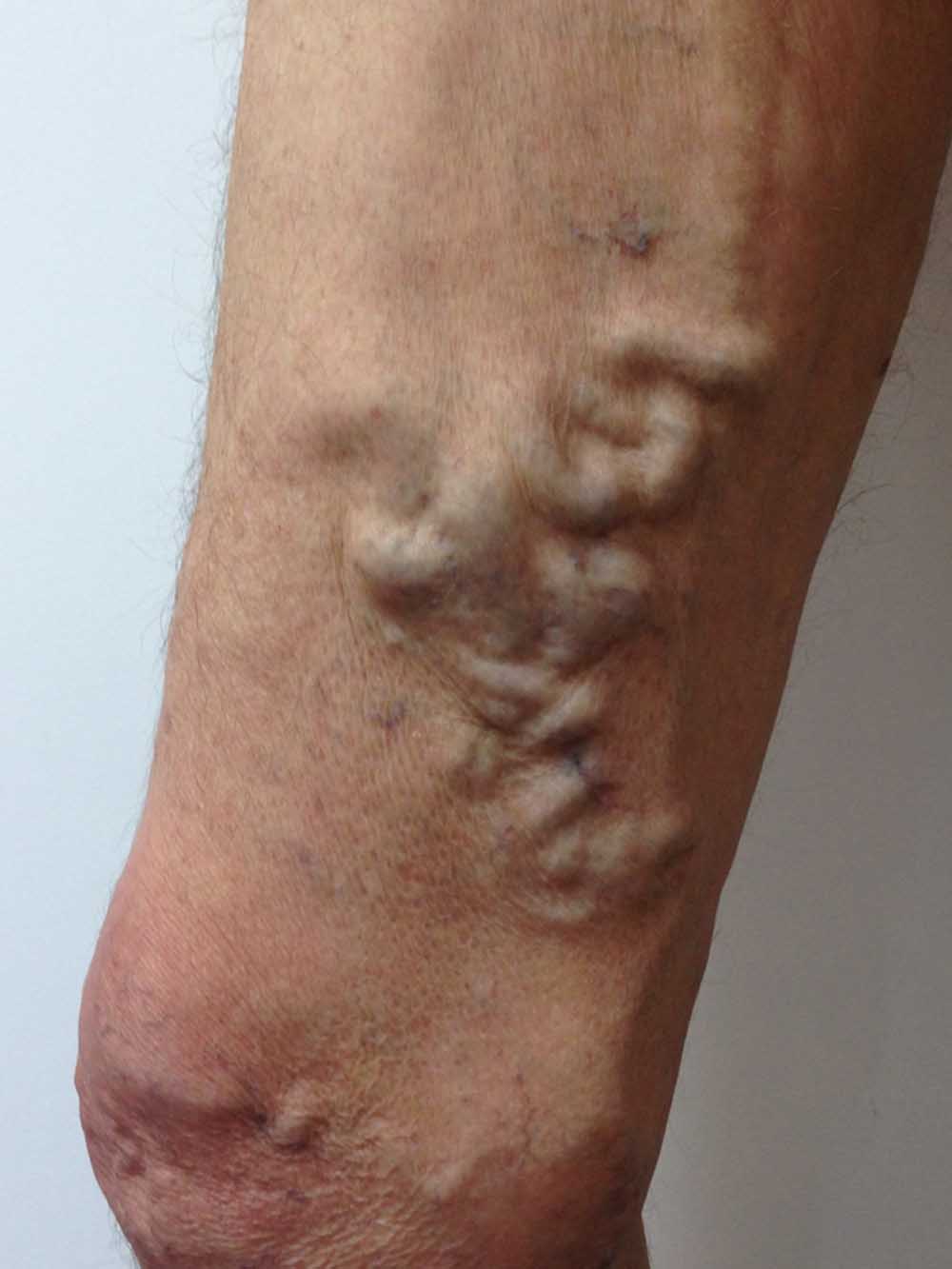
- Aching legs – burning, throbbing and cramping.
- Swelling of the legs.
- Enlarged veins seen under the skin.
- Brownish black discolouration of the ankles.
- Itching around one or more veins.
- Ulcers near the ankle – severe disease requiring immediate attention.
- Severe bleeding.
- Patient with large tortuous varicose veins, high-volume venous reflux, and early stasis changes of the medial ankle.
- Typical chronic medial leg ulceration associated with long-standing venous insufficiency. The ulcer had been present for 12 years and was refractory to every treatment approach until surgical extirpation of the refluxing superficial varices was performed.
Swelling & Leg Pain:
Leg swelling occurs as the varicose vein and the vein valves become more abnormal. The poorly functioning valves allow blood to flow backward, which causes pooling in the veins. Symptoms can include: aching, cramping, tired legs, swelling, heaviness, restless legs, and itching. The pooling causes increased pressure inside the veins. This increased pressure causes the veins to distend and become “leaky,” allowing fluid inside the veins to leak outside the vein into surrounding tissue causing swelling. The swelling can cause the legs to ache and feel heavy. Leg pain is caused not only from the effects of swelling, but also from the effects of congestion or pooling in the muscles.
Chronic Venous Insufficiency
When venous disease is long standing, it can become chronic venous insufficiency (CVI). CVI occurs from chronic pooling and congestion caused by leaky varicose veins, from chronic obstruction in veins due to repeated clots (thrombosis), or from repeated inflammation of the veins (phlebitis). As this condition worsens and become severe, skin changes and leg ulcerations can occur. Treatment is aimed at relieving the swelling in the legs.
Venous Ulcer - Wound Healing
Before
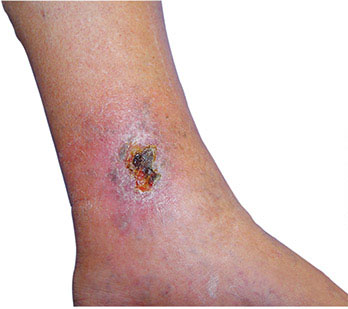
After
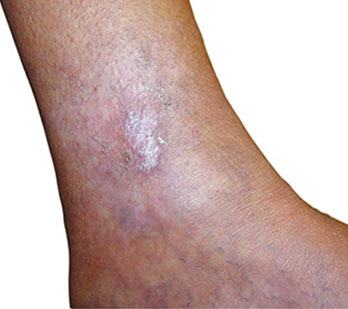
When venous disease and blood pooling becomes severe, venous stasis ulcers can occur in the skin. These ulcers usually occur around the ankles and are thought to be caused from long-standing “water logging” or pooling from blood congestion in the affected leg.
Long standing congestion is suspected to cause obstruction in the blood flow, which then causes changes in the skin pressure. These changes cause the oxygen levels in that area to become decreased. With the blood flow obstruction and the decreased oxygen levels, skin ulcers begin to form.
Diagnosis:
- Usually made by clinical examination by a vascular surgeon or in mild cases a dermatologist.
- Confirmed by duplex ultrasound test with colour Doppler, which shows the damaged valves and enlarged veins.
- Could also be confirmed by venography – now outdated due to improvement in colour Doppler.
Treatment of Moderate Varicosities:
Sclerotherapy is a safe, proven, and effective non-surgical treatment for veins of all sizes (both spider veins and varicose veins) that is performed in my clinic.
A tiny needle is used to introduce a sclerosing solution into the target vein in order to shut it down. The sclerosing agent may be a saline solution.
These agents / solutions do two things:
- It displaces the blood in the vein causing the vein to immediately fade or appear lighter in colour.
- The solution irritates the vein lining causing the vein walls to adhere together, preventing the vein from filling with blood again.
- The blood is then redirected to healthier veins and generally, circulation improves. Typically, a few weeks after treatment, the non-treated vein is absorbed by the body and disappears.
Aspects of sclerotherapy include:
- It is performed in the office during a routine office visit.
- No anaesthesia is necessary.
- It is usually painless, however some patients may experience discomfort from the needle prick (like a mosquito bite) or a few seconds of mild burning from the solution.
- There is no pre-treatment preparation.
- Patients can resume normal activity after leaving the office.
- There is no post-treatment scarring.
- Most patients require at least two sessions. The greater the number of veins present, the more sessions are required to achieve resolution. In most cases, a series of treatment sessions will be required to effectively treat your veins.
What to Expect After Treatment ?
- With smaller veins, a small piece of gauze will be taped over each injected vein and should remain for 24 hours after treatment.
- If larger veins are treated, we may recommend leg elevation for a few minutes or a compression stocking for a short period of time after treatment.
- You may notice slight tenderness for a few days in the treated vein after treatment.
- Temporary bruising around the treated area may occur; the length of time that it takes for this to resolve depends on the size of the vein treated, with larger veins taking longer to disappear.
- Once a varicose vein is effectively treated, it will not come back. However, nothing can prevent new spider or varicose veins may from occurring. If varicose veins do reoccur, they may be treated six to 12 months later in the same manner that the original ones were treated. There is no limit to the number of treatments that can be done.
Treatment For Moderate & Severe Varicosities:
Dr. Anand Somaya has seven years experience in treating venous diseases with the use of the most modern ELVeS laser machine.
Laser surgery
- Most modern and effective method of treatment of varicose veins.
- Immediate return to normal activities.
- Minimal scarring.
- The procedure is carried out under a short general anaesthesia which allows an effective amount of laser energy to be administered without pain or discomfort to the patient. In our experience local anaesthesia did not permit adequate laser energy to completely close the diseased vein.
- The surgical experience gained over the years enables us to effectively and completely close all the diseased veins with a minimal recurrence rate.
ELVeS (Endo Laser Vein System)
Following percutaneous entry into the greater saphenous vein, a fine ELVeS laser fiber is inserted into an introducer sheath and advanced towards the sapheno-femoral junction.
Once in position (confirmed by ultrasound and the laser aiming beam), the near infrared laser energy is delivered in short pulses, causing thermal damage and contraction of the vein wall. Due to the application of tumescent local anaesthesia damage of surrounding structures is inhibited.
The laser treatment is performed along the entire vessel length. The irreversible thermal damage induced by the laser energy then leads to a complete occlusion of the vein.
Prevention:
- Regular exercise helps to pump blood up the legs and back to the heart against gravity.
- Getting enough rest.
- Eating a healthy diet.
- Keeping your weight down.
- Support stockings and herbal supplements have been shown to improve pain and swelling from varicose veins but have never been proven to heal bad veins or prevent healthy ones from deteriorating.
- Unfortunately, time and gravity cause venous valves of the vein in susceptible people to wear out over time. Once a vein has become varicose it will never function properly and should be eliminated by laser or removed by surgery.